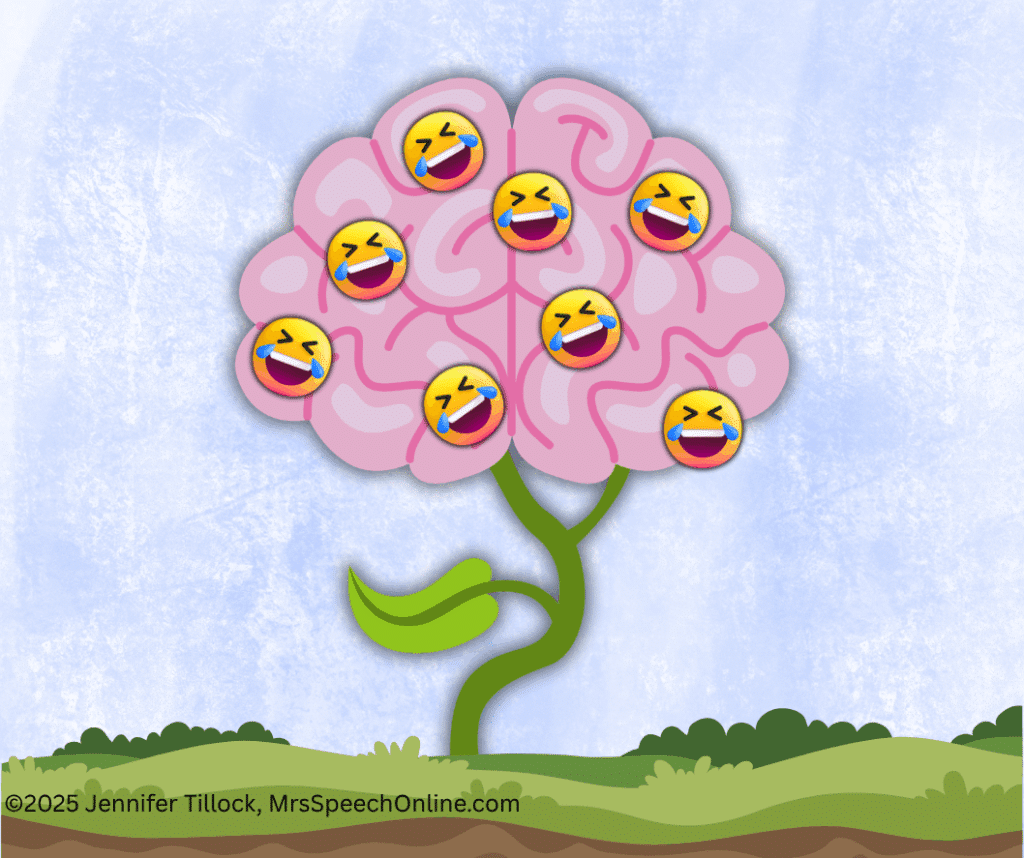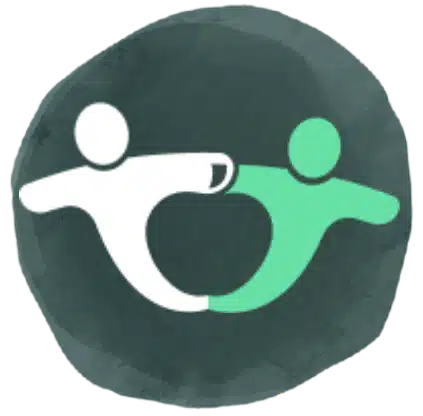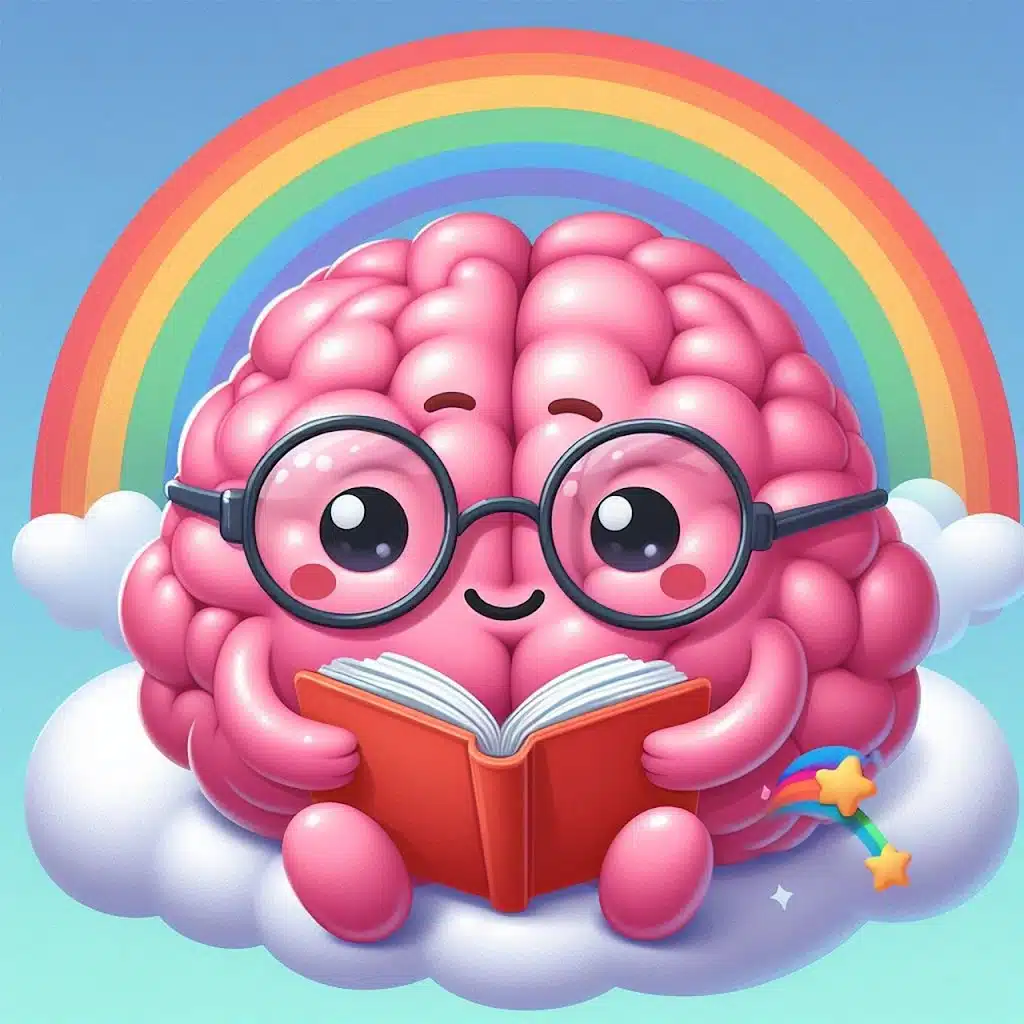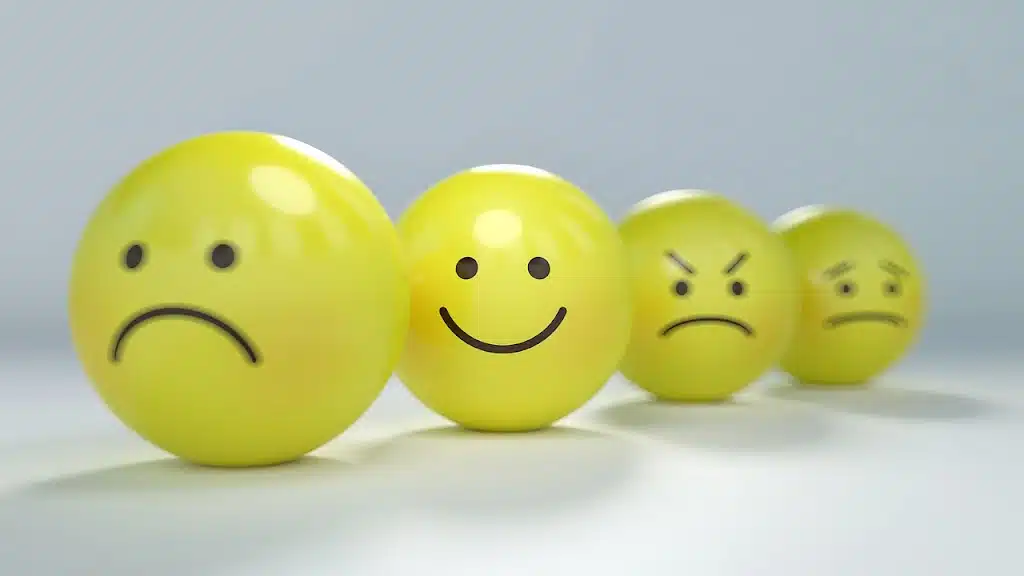Most of us feel better after a good laugh, and it’s not just “feel-good chemicals.” Humor is a sophisticated form of communication that requires a massive cognitive workout. The benefits of incorporating humor into speech therapy sessions are substantial, offering practice for both cognitive and social skills. If you’re looking for a single, versatile activity that addresses metacognition, social-pragmatics, and abstract language, look no further than a simple joke.
I’m Mrs. Speech, and for years, I’ve relied on daily jokes to raise the bar for vocabulary and linguistic flexibility school-wide. You can see my previous post on the topic, Why I had a joke board (And you should too), where I discuss the benefits to the school community. Today, I want to talk about the speech and language benefits to a daily joke.
The Cognitive Workout of a Joke
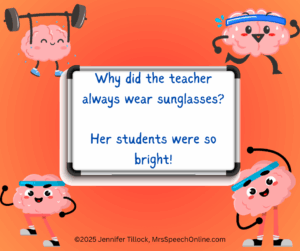
Jokes aren’t just funny; they are highly effective, embedded metacognition activities for SLPs. To understand a pun, riddle, or knock-knock joke, the brain must quickly engage in several complex therapeutic tasks:
Multiple Meaning & Semantic Flexibility
The core of most humor is the ambiguity of language. The student must simultaneously hold two meanings of a word (the literal and the figurative/unexpected) in mind. As I often ask my students, “What makes it funny? It’s the brain not being sure which meaning is correct!” This rapid shifting of focus is directly tied to reading comprehension and the ability to process novel vocabulary. (Example: “Why was the cyclops such a good teacher? He only had one pupil.”)
Inference and Abstract Thinking
Jokes almost always rely on unstated assumptions. Students must make a rapid inference—a cognitive leap—to bridge the gap between the setup and the punchline, a skill that directly transfers to narrative comprehension and problem-solving across all academic areas.
Sequencing, Memory & Retrieval
Telling or retelling a joke encourages the commitment of specific phrasing, vocabulary, and sequence to memory, building both auditory memory and verbal retrieval skills. This focus on structured language helps build stronger retrieval pathways.
Social-Pragmatic & Expressive Gains of Humor
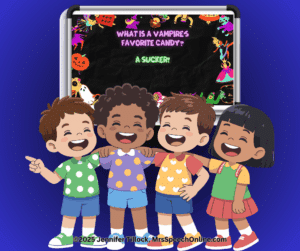
The value of humor extends beyond words; it’s a powerful social lubricant that targets specific communication goals. Humor in speech therapy also provides these benefits:
Rapport and Low-Pressure Engagement
Humor builds a crucial bridge between students and teachers. For a shy or anxious child, having a simple joke to share provides a low-pressure entry point for conversation, drastically reducing the intimidation factor involved in practicing turn-taking and sustained conversation.
Intonation, Pacing & Fluency
Successfully delivering a punchline requires conscious control over prosody. Students naturally practice fluency skills like appropriate pacing and varying intonation to maximize the joke’s impact. This gives you a fun, motivating context to target speaking rate and voice modulation.
Perspective-Taking
Understanding why someone else doesn’t “get” a joke forces perspective-taking—identifying what specific context, vocabulary, or background knowledge they might be missing. This develops crucial social awareness.
Easy-Prep, High-Impact Routine: Jokes for SLPs
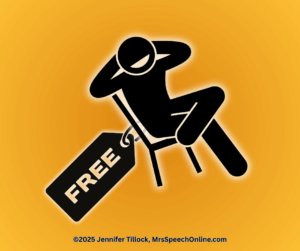
The great news is that getting started is easy. All you need is a poster-sized whiteboard and 30 seconds! (I used removable 3M velcro strips to avoid wall damage and permission issues.) You can start immediately by doing a quick online search for jokes, adding “for kids” to your query.
However, the challenge quickly becomes consistency and curation. I used to print out my joke document at the beginning of the year and place a checkmark next to jokes when I used them to avoid repetition.
If you want to maximize the therapeutic and school-wide benefits of humor (which also drastically improves your visibility as an SLP, as discussed in my previous post!), I’ve done the hard work for you:
🤩 Ready-Made Joke Products: Zero-Prep, Maximum Impact on Metacognition
I’ve collected, curated, and formatted my favorite jokes into resources designed to be instantly used on any platform. Bring the metacognitive benefits of humor into your classroom today! You can purchase the joke bank alone, or grab the highly visual backgrounds optimized for today’s digital classroom:

1. The Joke Bank (Core Content)
It’s So Punny! The Ultimate Joke Bank: This is the original, over 50-page document of school-appropriate, kid-friendly jokes. This is your foundation for building a routine, ensuring you never run out of quality material.
2. The Digital Classroom Application

Jokes/Puns on Themed Backgrounds – A Growing Bundle! (3 Themes & Counting!): This bundle is the easiest way to display your jokes! It includes ready-to-use image files for seamless integration into Zoom, Google Meet, or your Smartboard, and can also be printed. Themes currently include Back-to-School, Winter, and the new Halloween set (which includes the unique hidden-punchline feature!). Buy the growing bundle now to lock in the lowest price before more seasonal themes are added!
3. Ready-to-Use Freebie!

FREE! Pirate-Themed Jokes with Background (formatted for teleconferencing) (8 Jokes): Looking to try the format before you buy? Grab my free set of 8 Pirate-Themed Joke Backgrounds to test the immediate engagement and ease of use in your classroom today!
Ready to leverage the benefits of humor in your speech therapy? Check out my store and start laughing your way to better outcomes!
Keep that funny bone tickled,
Social Media Icons: designed by rawpixel.com – Freepik.com
